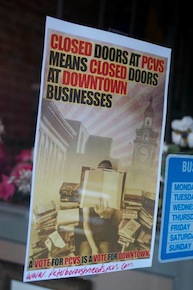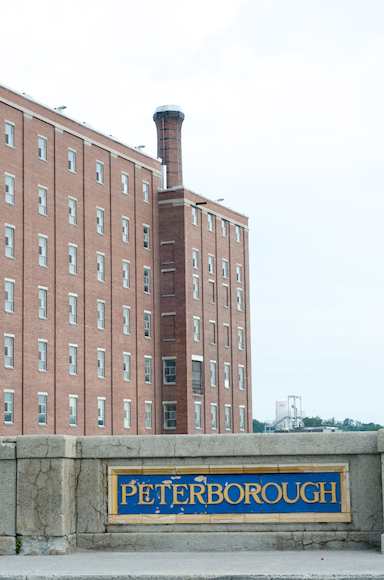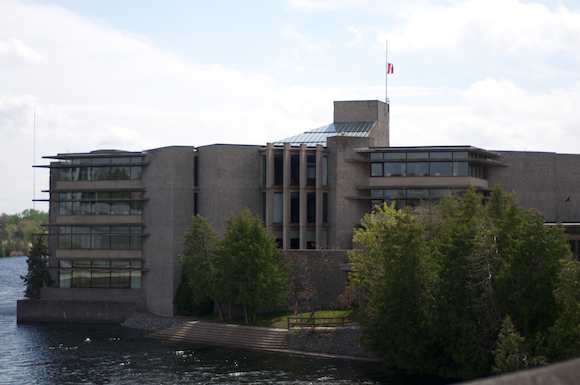 THE PHILLIPS REPORTWith all the bad news coming out of the US, Europe, and international financial markets, the most common topic of discussion locally is unemployment. Locally, there is no doubt that the number of those without work has grown since the beginning of the international financial crisis in the fall of 2008.
THE PHILLIPS REPORTWith all the bad news coming out of the US, Europe, and international financial markets, the most common topic of discussion locally is unemployment. Locally, there is no doubt that the number of those without work has grown since the beginning of the international financial crisis in the fall of 2008.
The data is clear. The number of people unemployed in the Peterborough area doubled between November 2008 and May 2009—from 2,800 to 5,600. Thankfully, the number of unemployed has increased more modestly since May 2009. It now stands at 6,900. The good news is that even through the economic downturn, unemployment in Peterborough historically falls between May and November each year.
Several attempts have been made to understand the numbers. In many cases, more questions have emerged than answers. The Statistics Canada area is larger than the City but not, in terms of population, but not as large as the County and City combined. So what does it really mean for the City? How is unemployment measured and is the collection of the data accurate? As interesting as these issues may be, they provide little insight into the greater jobs challenge Peterborough is facing.
Economists are notorious for making predictions, so I am going to avoid making them. There are, however, economic forces that have a direct effect on the local economy and push it in one direction or another. Where they will lead us, exactly, cannot be determined. Many of these forces are beyond the control of businesses—big or small—or local, provincial, or federal governments. Like it or not, the international financial crisis that began in 2008, the sovereign debt issues in Europe, and the debt ceiling debacle in Washington all have an influence—and not always in a small way—on our local economy.
Peterborough is a much more diverse economy than it was when it felt the effects of economic recessions in the 1970s and 1980s. This diversity in both the private and public sectors has given it a strong foundation upon which to build. To build on that foundation requires customers: local, national and international. Our industrial sector very likely serves more customers internationally than Peterborough businesses ever have, but the global economic environment is not doing so well, and, therefore, we’re not doing so well either.
The US is, in many ways, weak. Economic fragility and instability always leads to short-sighted decisions and more emphasis on maintaining themselves than on growth. These realities in the US inevitably have a negative impact on business here.
Last week the exchange rate was $1.06 US for $1 Canadian. That represents more than a 50 percent increase from when a Canadian dollar cost 70 US cents, not many years ago. That means a product made in Peterborough and sold for $100 Canadian cost the US customer $70 US a few years ago. Last week that same item would have cost the US customer $107 US. This clearly puts pressure on local businesses selling in the US to cut costs, and most importantly, become more productive to remain competitive.
These factors, relatively close to home, are combined with instability Europe to create a dismal view of prospects for economic growth and more jobs any time soon. The likelihood of what has been recently called "a double dip recession" is growing by the day.
The good news is that the Peterborough economy is international in scope. The bad news is that the international economy is generally not doing as well as the Canadian economy. Unfortunately, the standard of living to which we have become accustomed requires us to be a small part of a very large global marketplace.
As much as governments are the easiest to blame when an economic downturn occurs, all levels of government—municipal, provincial, and federal—have done exactly what was required to keep the local economy from suffering too greatly when the first downturn occurred almost three years ago. However, as we have seen from the recent disaster in Washington, there is a limit to what governments can do. If we are to lay blame it is not with government.
With the realities we are facing it is a waste of time to endlessly analyze what could have been done. The obvious question now is: What can be done? Unfortunately, little can be done in the short-term since the negative forces are far beyond the ability of us, or our business and government leaders, to control, or even influence. Some measures can be taken to minimize the most serious consequences of this economic environment. The more important question is: What can be done now to be better prepared for the inevitable recovery?
In the private sector, this is a time to invest in new ways of doing business so that they are more productive and efficient when markets begin to recover. These necessary investments are much more than just technological. New organizational processes and partnership need to be explored, evaluated, and acted upon. The economy that will eventually emerge will not be the one that we enjoyed before November 2008. It will be much more competitive. We must be prepared for that inevitability.
In the public sector, the infrastructure—physical and human—must be put in place for the recovery. All levels of government should be commended on the initiatives that they have undertaken to improve the economic foundations of the area. There is no doubt that the physical infrastructure is being improved and expanded. Educational opportunities and new facilities at both Trent and Fleming have expanded, and the recent announcement concerning skills training at Fleming will ensure that skilled people will be ready when the recovery comes.
The more difficult question is: What can the unemployed do? Even though there are examples of well-educated people who are unemployed, the truth is that those with higher levels of education have greater job stability and significantly higher incomes, overall. With the competitive pressures growing for business, those who will be first employed when the recovery arrives will be those who can contribute most to the future success of the business—the ones with the greatest productive and creative potential.
With few opportunities to gain experience during the economic downturn, the only way to improve ones’ productive potential is through education. With the government investments that have been made to expand both Trent and Fleming, the opportunities to improve ones' productive potential are right here in Peterborough.
From a community-wide point of view, this unexpected economic downturn can lead to even greater prosperity when it ends if we treat it as an opportunity. Businesses, governments, and people have to do whatever they can to lay a broader and stronger foundation upon with to build a stronger, more innovative, and more creative local economy than we had before the downturn. Every aspect of our community— for-profit, not-for-profit, charitable—needs to look to how they can better serve a growing community once the economic tide has turned.
We need to return to the natural tendency to lay blame for the current economic instability and the current level of unemployment. As I have said, we cannot blame our governments for doing too little. There is only so much they can do. And it is not local businesses' fault. They surely don’t like the current conditions, so why would they create them. Something has happened in Peterborough that goes far deeper than the actions (or inaction) of business or government.
The real culprits in this economic disaster are those who preach and practice out-dated and consistently unsuccessful approaches to how economies should, rather than really do, work. At the heart of the financial disaster beginning in 2008 are the same failed ideas that led to the Great Depression and every financially-driven economic downturn since then. It comes down to, like it or not, the ideas that underlie the actions of business—particularly finance.
At the heart of these ideas is the nineteenth century notion that all consumers and all businesses—as isolated, individual entities—following their own motivations will lead to socially beneficial results. No other way of doing things, according to this philosophy, could do better for society. This is the philosophy that is at the heart of mainstream economics. Of course, it has been, and will continue to be, proven not to lead to socially beneficial results. The theory and the facts simply don’t match. It is amazing that we now find ourselves appealing for remedies for our current economic disease from the very people, and their unwavering ideas, that made us sick in the first place.
It is ironic that those preaching the pro-individual, anti-social dogma cherish competition because of its ruthless punishment for those who fail in the marketplace, but they are not willing to live by the same rules themselves. Not one of the US business leaders who, beyond a shadow of a doubt, contributed to the global crisis, have been made accountable for their actions—and accountable to society, not just their shareholders.
More disturbing, especially in a time of high unemployment, are the cases of those who preach the failed ideas and praise the rigors of competition and accountability but do so from behind guarantees of lifetime job security. Why should we expect positive change when there are no incentives to get it right for society? Those who are in a position to influence the economy but get it wrong are unaccountable and keep their jobs. Those who trust those in positions of influence, pay the price.
In times of crisis, it is much easier to find and focus on the true heart of the matter. We are in an era of unemployment and deficits—deficits of many different kinds. The most serious deficit we now face is the deficit of economic ideas that are relevant to our time—not the nineteenth century—and the deficit of will to rid us of the root cause of economic disaster and the unemployment that comes with it.
[Contributed by PtboCanada's Tom Phillips Ph. D.]
[Editor's Note: Phillips is Economist & Sustainability Director - Greater Ptbo Innovation Cluster. This is his 4th column for PtboCanada.com. Click here to read his first column for us on Peterborough's "Creative Class", here to read his second column "Growing Peterborough From 'The Inside-Out'", and here to read his third on Peterborough's astonishing record of success in lacrosse.]
Tip us at tips@ptbocanada.com. Follow us on Twitter @Ptbo_Canada.
 When the issue of having a casino in Peterborough comes up in casual conversation, the most common reactions are usually physical, not verbal. Either people's eyes roll or their shoulders shrug. Most often, people are against it or ambivalent to it. Rarely does anyone engage the idea with a sense of excitement or express how important a casino would be for the future of the City.
When the issue of having a casino in Peterborough comes up in casual conversation, the most common reactions are usually physical, not verbal. Either people's eyes roll or their shoulders shrug. Most often, people are against it or ambivalent to it. Rarely does anyone engage the idea with a sense of excitement or express how important a casino would be for the future of the City.




















